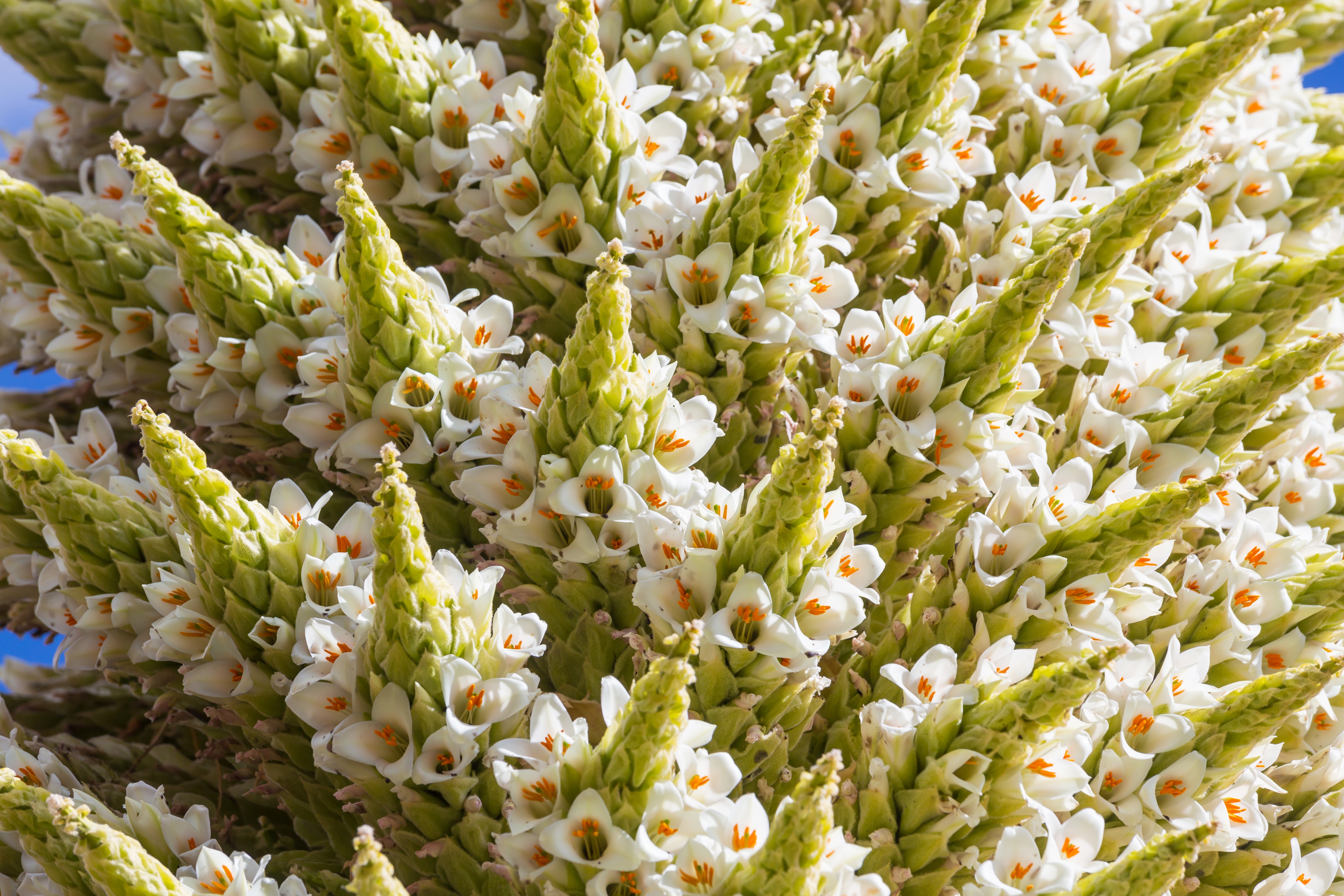Who’s the ruler of the Andes? You might be thinking the seven countries they run through, or perhaps the mighty Andean condor. Both are wrong: it’s an absolutely massive, rare-blooming, and long-lived plant called Puya raimondii.
What is Puya raimondii?
The so-called “Queen of the Andes” belongs to the bromeliads, a family of plants that also includes the pineapple. While P. raimondii has some of the same spiky characteristics, it is a much, much taller plant. This giant can reach heights of up to 40 feet (12 meters), making it the largest bromeliad in the world.
It was first described by French naturalist Alcide d’Orbigny in 1830, though it wasn’t classified until 1874, when scientist Antonio Raimondi dubbed it Pourretia gigantea. It was later reclassified in 1928 into the genus Puya and received its species name in honor of Raimondi.
Where is Puya raimondii found?
If you hadn’t guessed from its nickname, this tower of a plant is found in the Andes, the world’s longest continental mountain range. However, P. raimondii is only endemic to its grassy regions in Peru and Bolivia, generally found at altitudes between 3,000 to 4,800 meters (9,800 to 15,700 feet) and facing north.
Nearly half of the total population of P. raimondii can be found within a single place – Peru’s Titankayocc Regional Conservation Area, which is thought to be home to woods of more than 450,000 of the plants. The remaining population usually tends to be far more scattered.
What makes Puya raimondii special?
Part of what makes the Queen of the Andes what’s been described as “charismatic” is, of course, its towering height, but there’s more to this plant than its giant status.
There’s some suspicion amongst researchers that it could be “protocarnivorous”, meaning it can trap and kill small animals but can’t digest them. Though further research needs to be done to prove this theory, it’s not entirely out of the realm of possibility. A species within the same genus, Puya chilensis, is also a suspected protocarnivore, with a taste for sheep.

Puya raimondii blooms with an abundance of white flowers.
Image credit: Galyna Andrushko/Shutterstock.com
Then there’s the matter of its particularly long lifetime. P. raimondii can live longer than some humans, with a lifespan between 80 to 100 years. Pretty impressive, but that’s not all – despite potentially sticking around for a whole century, it only blooms once in its life and only does so right at the end of it.
After creating a large display of white flowers and producing anywhere between 6 to 12 million seeds, P. raimondii pops it metaphorical, plant-based clogs. Its legacy, however, literally stands, as the plant can remain upright for several years after its death.
Source Link: Puya Raimondii: The 40-Foot “Queen Of The Andes” That Blooms Only Once A Century